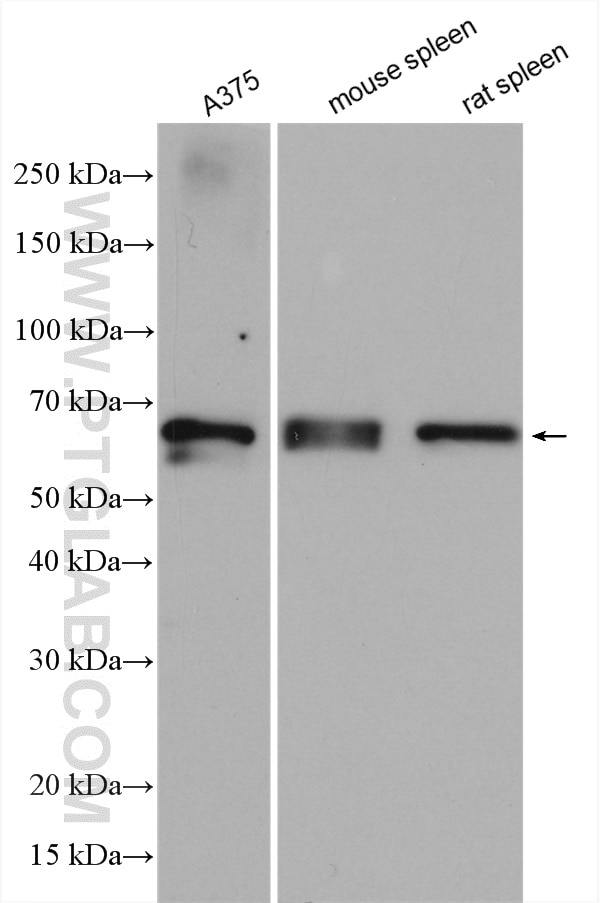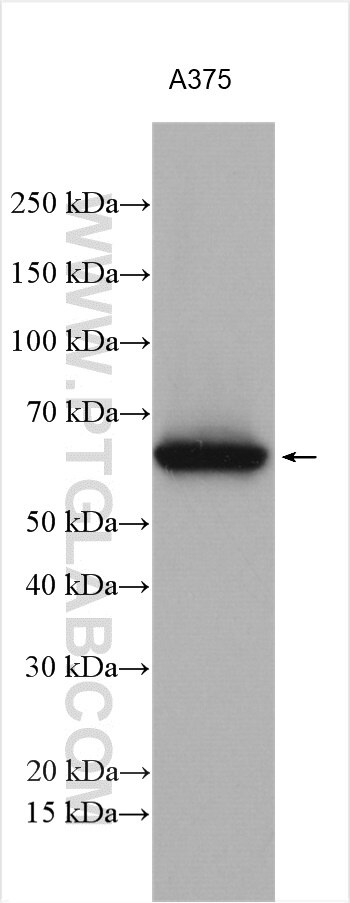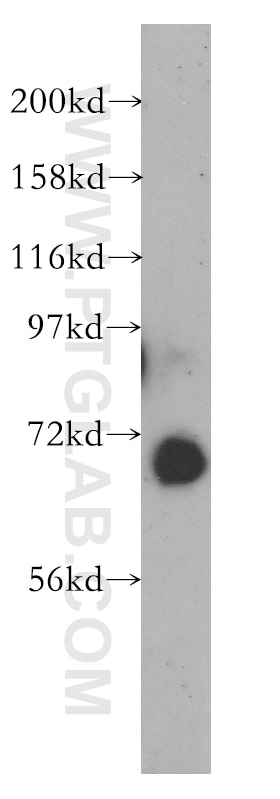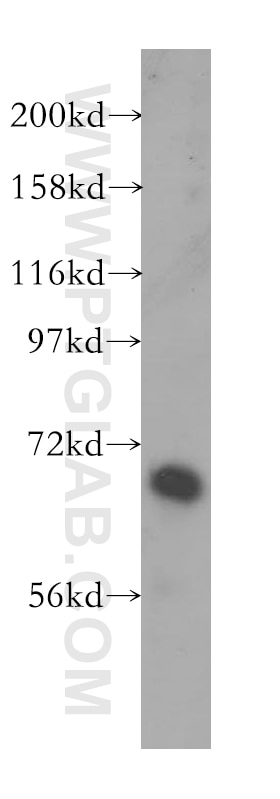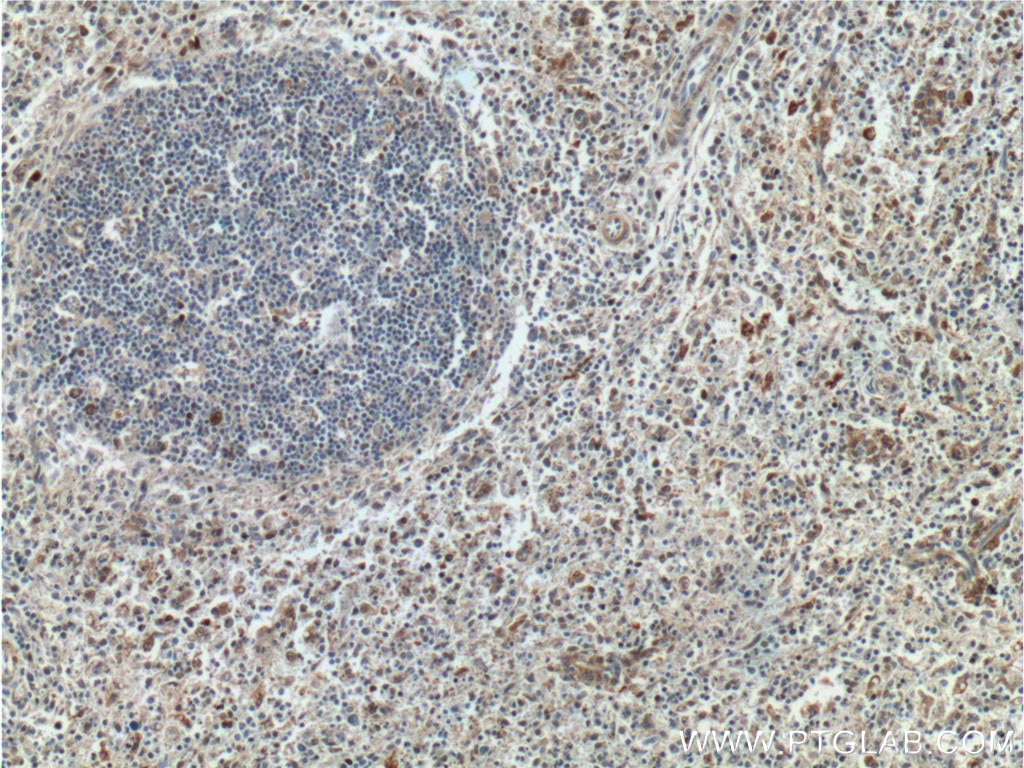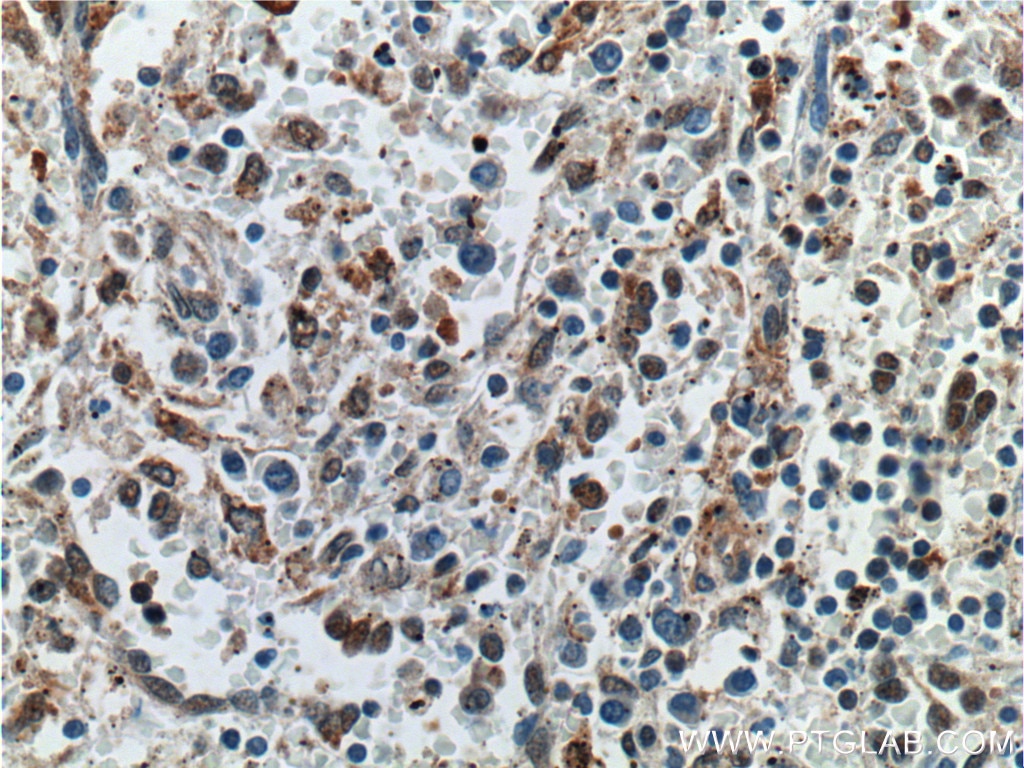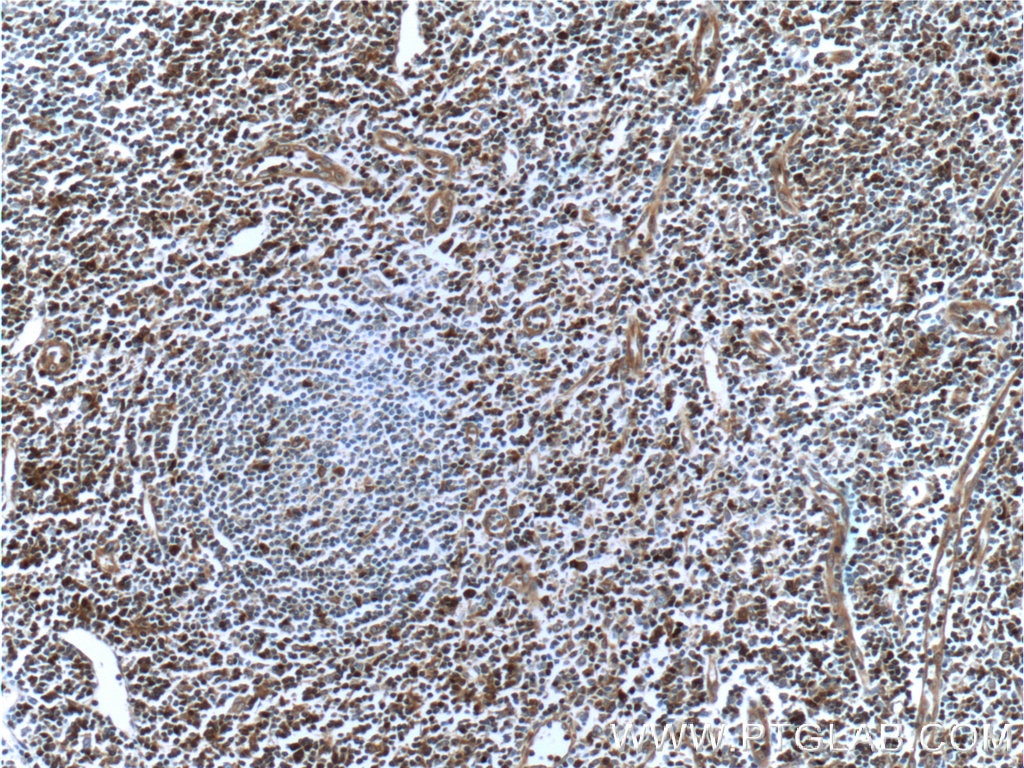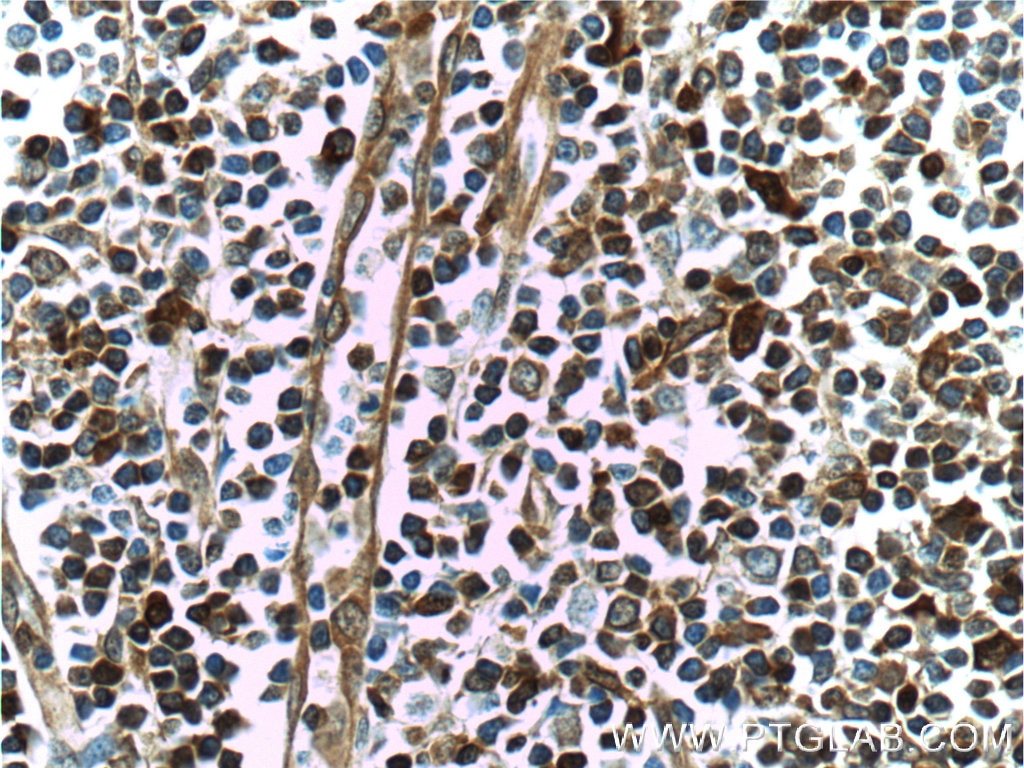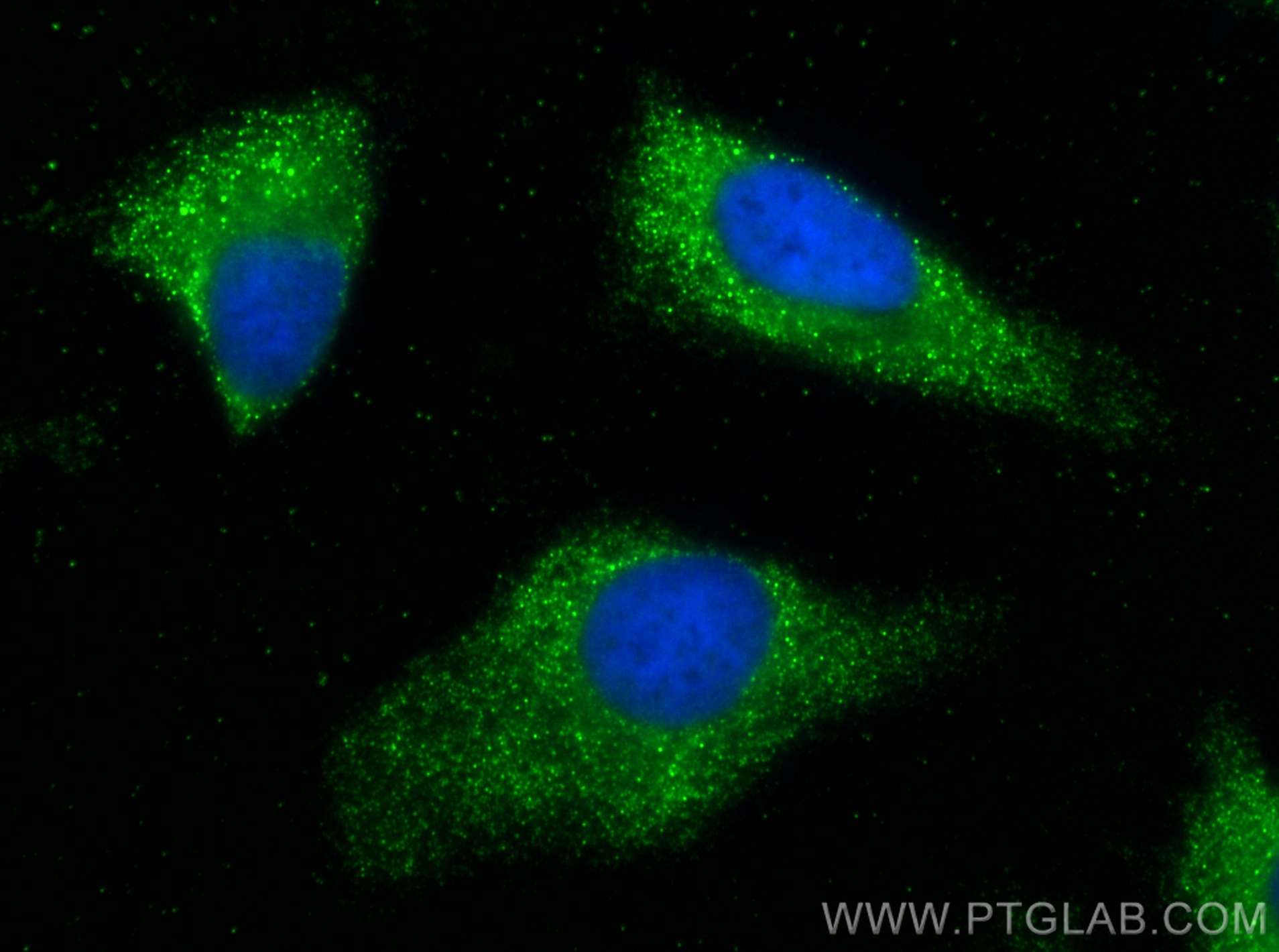Validation Data Gallery
Tested Applications
| Positive WB detected in | mouse spleen tissue, human placenta tissue, A375 cells, K-562 cells, human lung tissue, rat spleen tissue |
| Positive IHC detected in | human spleen tissue, human tonsillitis tissue Note: suggested antigen retrieval with TE buffer pH 9.0; (*) Alternatively, antigen retrieval may be performed with citrate buffer pH 6.0 |
| Positive IF/ICC detected in | HeLa cells |
Recommended dilution
| Application | Dilution |
|---|---|
| Western Blot (WB) | WB : 1:500-1:2000 |
| Immunohistochemistry (IHC) | IHC : 1:50-1:500 |
| Immunofluorescence (IF)/ICC | IF/ICC : 1:50-1:500 |
| It is recommended that this reagent should be titrated in each testing system to obtain optimal results. | |
| Sample-dependent, Check data in validation data gallery. | |
Published Applications
| KD/KO | See 6 publications below |
| WB | See 38 publications below |
| IHC | See 11 publications below |
| IF | See 22 publications below |
| IP | See 1 publications below |
| CoIP | See 1 publications below |
Product Information
11854-1-AP targets GBP2 in WB, IHC, IF/ICC, IP, CoIP, ELISA applications and shows reactivity with human, mouse, rat samples.
| Tested Reactivity | human, mouse, rat |
| Cited Reactivity | human, mouse, rat, toxoplasma |
| Host / Isotype | Rabbit / IgG |
| Class | Polyclonal |
| Type | Antibody |
| Immunogen | GBP2 fusion protein Ag2425 相同性解析による交差性が予測される生物種 |
| Full Name | guanylate binding protein 2, interferon-inducible |
| Calculated molecular weight | 591 aa, 67 kDa |
| Observed molecular weight | 67 kDa |
| GenBank accession number | BC022272 |
| Gene Symbol | GBP2 |
| Gene ID (NCBI) | 2634 |
| RRID | AB_2109336 |
| Conjugate | Unconjugated |
| Form | Liquid |
| Purification Method | Antigen affinity purification |
| UNIPROT ID | P32456 |
| Storage Buffer | PBS with 0.02% sodium azide and 50% glycerol , pH 7.3 |
| Storage Conditions | Store at -20°C. Stable for one year after shipment. Aliquoting is unnecessary for -20oC storage. |
Background Information
GBP2 is a member of the GTPase family and is crucial to host immunity against pathogens. GBP2 is also used as a marker of interferon (IFN) responsiveness because it is one of the most highly expressed genes after IFN-γ stimulation. Increased GBP2 expression is also associated with a better prognosis in breast cancer and may have a role in T-cell defense against breast cancer. Interestingly, GBP2 expression in NIH/3T3 fibroblasts inhibited Rac activation and matrix metalloproteinase-9 expression, suggesting a possible role for GBP2 in regulating cancer metastasis. The molecular weight of GBP2 is 67 kDa. (PMID: 29072687, 35383115)
Protocols
| Product Specific Protocols | |
|---|---|
| WB protocol for GBP2 antibody 11854-1-AP | Download protocol |
| IHC protocol for GBP2 antibody 11854-1-AP | Download protocol |
| IF protocol for GBP2 antibody 11854-1-AP | Download protocol |
| Standard Protocols | |
|---|---|
| Click here to view our Standard Protocols |
Publications
| Species | Application | Title |
|---|---|---|
Nature Ubiquitination and degradation of GBPs by a Shigella effector to suppress host defence. | ||
Nature Caspase-11 activation requires lysis of pathogen-containing vacuoles by IFN-induced GTPases. | ||
Cell IRGB10 Liberates Bacterial Ligands for Sensing by the AIM2 and Caspase-11-NLRP3 Inflammasomes. | ||
Nat Immunol The transcription factor IRF1 and guanylate-binding proteins target activation of the AIM2 inflammasome by Francisella infection. | ||
Nat Neurosci A phenotypic screening platform for identifying chemical modulators of astrocyte reactivity |
